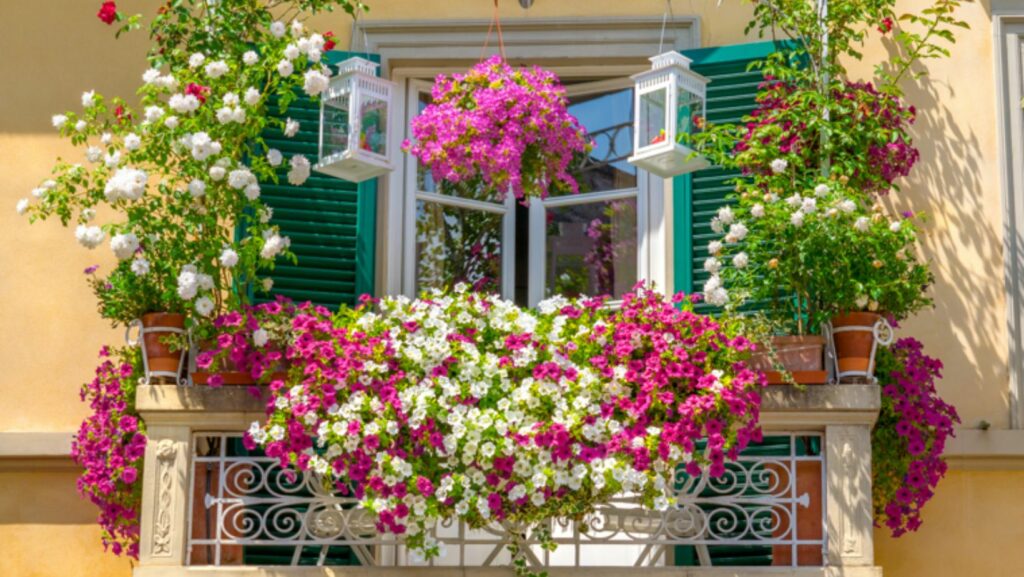
Stepping outside your window to a vibrant display of colorful flowers is blissful. It’s a small oasis that brightens your day and adds curb appeal to your home. Window flower boxes bring a touch of nature to urban spaces. They allow you to create a flourishing garden even with limited space. They’re perfect for apartment dwellers, homeowners with small yards, or anyone who simply loves the beauty of flowers.
Selecting the right window box isn’t always easy. You need a box that fits your window and complements your home’s style. It should also withstand the elements and be sturdy enough to hold the weight of soil and plants. And it should provide proper drainage to keep your flowers healthy.
Here, you’ll learn how to choose the perfect materials for your window flower box. This includes the pros and cons of different materials and the factors to consider based on your specific needs.
Assessing Your Needs
You must first assess your specific needs regarding window box installation. Several factors influence your choice, ensuring your flower box thrives and complements your home’s exterior.
Location
Think about your window’s location. Does it receive full sun, partial shade, or mostly shade? Sun exposure affects how quickly your flower box dries out, influencing the material you choose. Wind and rain also play a role. If your window is exposed to harsh weather, you’ll need a sturdier material that can withstand the elements.
The Weight Factor
The types of plants you want to grow and the soil you use will impact the weight your flower window boxes need to support. If you’re planning on planting heavy feeders like tomatoes or using dense soil, you’ll need a more robust material than if you’re opting for lightweight flowers and airy potting mix.
Style And Aesthetics
Your flower box should enhance your home’s curb appeal. It shouldn’t detract from it. Consider the style of your house and choose a material that complements its overall aesthetic.

Do you prefer a classic look, a modern feel, or something more rustic? Your personal taste matters too. Pick a material that you’ll enjoy looking at every day.
Budget Considerations
Different materials come with varying price tags. Wood is often a budget-friendly option, while metal and fiberglass can be more expensive. Set a budget before you start shopping to narrow down your choices and ensure you don’t overspend.
Popular Window Box Materials
Each material offers unique benefits and drawbacks and caters to different preferences and budgets. Below is an outline of the most popular window box materials and their pros and cons.
Wood
Wood exudes a classic charm that complements various architectural styles. Popular ones include cedar and redwood. It’s easy to customize, allowing you to paint or stain it to match your home’s exterior. However, wood requires regular maintenance, such as sealing or staining, to prevent rot and decay.
Metal
Metal window boxes are typically made from galvanized steel, aluminum, or copper. They boast exceptional durability and longevity. They can be sleek and modern or ornate and traditional. While aluminum resists rust, other metals may require occasional maintenance to prevent corrosion. Keep in mind that metal boxes can get quite hot in direct sunlight and this can affect your plants.
Plastic/Resin
Plastic, resin, vinyl, fiberglass, and composite material window boxes offer a lightweight and affordable option. They’re weather-resistant and low-maintenance.

And they come in many colors and styles. However, some plastics may fade over time and may lack the natural aesthetic appeal of wood or metal.
Other Materials
Other materials like terracotta, concrete, or even repurposed items are less common but can make unique and stylish window boxes. Terracotta offers a rustic charm but can be fragile. Concrete provides durability but can be heavy. Repurposed materials, like old wooden crates or metal containers, are often eco-friendly and show creativity.
Key Features For Success
Beyond the material itself, several key features contribute to a successful window flower box installation. These ensure your plants thrive and your box remains secure and functional.
Drainage
Proper drainage is essential for healthy plants. Excess water can lead to root rot and other problems. Make sure your chosen window box has drainage holes. If it doesn’t, you can easily drill them yourself using a standard drill bit.
Liners
Consider using liners to enhance your window box’s performance. Coco coir liners, made from coconut husks, are eco-friendly and help retain moisture while allowing for proper drainage. Plastic liners can also be used to prevent water from seeping out and staining your home’s exterior.
Mounting Hardware
Choose sturdy mounting brackets that can support the weight of your filled flower box. Consider the weight of your chosen material, soil, plants, and water when selecting brackets. Follow the manufacturer’s instructions for installation, ensuring your box is securely fastened to prevent accidents.
Conclusion
Choosing the right window box material sets the stage for a visually appealing window garden. Each material offers unique advantages and drawbacks, so weigh them carefully to find the perfect fit for your needs.
Remember to research plants that thrive in your climate and sun exposure. Consider using a self-watering system to simplify maintenance, especially if you’re often away from home. And don’t be afraid to start small. Begin with one or two boxes and gradually expand your collection as you gain confidence and experience.












